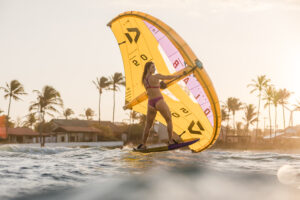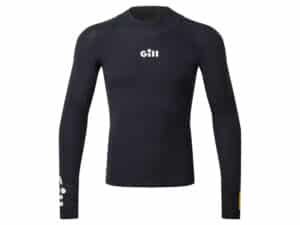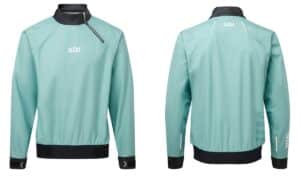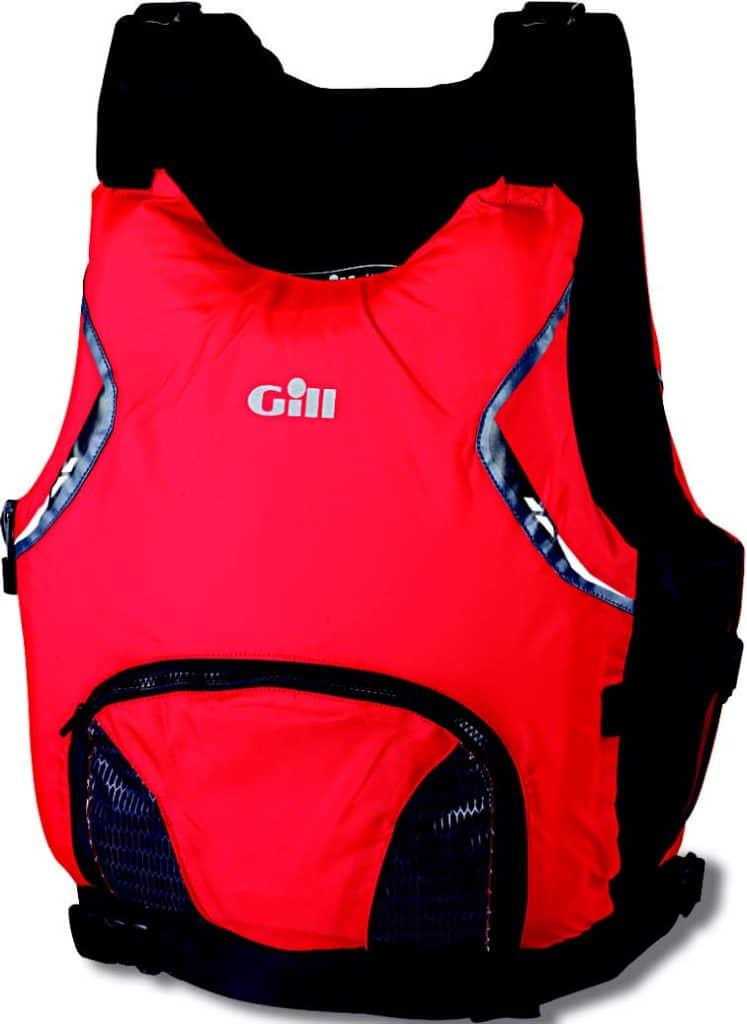
Gill Pro Racer buoyancy vest
At the 2011 Rolex Miami OCR, foreign sailors wore buoyancy aids instead of Coast Guard approved sailing life jackets, which all U.S. competitors were required to wear. Why are only the international sailors allowed to wear the more comfortable, less restrictive, and lower-profile PFDs for sailing? Because in international events, sailors are allowed to wear what’s legal in their country. This discrepancy puts U.S. dinghy sailors at a distinct disadvantage. Since almost all countries except the United States permit the use of buoyancy aids, U.S. sailors are required to wear larger, more restricting lifejackets approved by the U.S. Coast Guard.
There is a workaround for sailors of bigger boats. At the Melges 32 World Championships in San Francisco, for example, many teams wore buoyancy aids while storing approved PDFs for sailing inside the boat. As long as there’s one for each crewmember onboard, they’re safe.
No doubt, the regulations are being ignored these days as buoyancy aids are becoming more and more prevalent as the sole flotation devices aboard boats at other regattas throughout the United States. But as far as we know, it hasn’t been an issue in the protest room. However, unless you are carrying a Coast Guard-approved sailing life jacket as well, it could be, because U.S. SAILING prescriptions require boats to conform to “government regulations that apply in the racing area” (Part 4, Rule 40). High school and college racing programs are sticklers about the use of Coast Guard-approved lifejackets.
What’s the difference between the U.S. Coast Guard requirements and those of other nations? A big part of it comes down to the amount of buoyancy, which is measured in Newtons (1 Newton equals .22 pounds of force). The Coast Guard states that keeping someone’s head out of the water requires about 11 pounds of buoyancy, or 50 Newtons. That’s exactly how most buoyancy aids are rated. Yet, Coast Guard-approved lifejackets must rate at least 70 Newtons, providing 15.5 pounds of flotation. Perhaps in recognition of that difference, all buoyancy aids come with a written caveat stating that they are not life jackets and they are designed for those who can swim and are in situations where “help is close at hand.”
How many other countries sanction the 50-Newton buoyancy aids? None of the manufacturers we spoke with could provide a specific number, but the information sheets that come with the vests reveal instructions in at least 27 languages, and all indicate that the products are CE certified.
“It’s a European standard,” says Mike Krantz, from Zhik NA, which sells many of the popular models now available. “However, if you go to South America, Australia, etc., they accept that standard. There’s a reciprocity there.” Krantz adds that there’s a big push to come up with an international standard. “Pretty much everybody in the world has agreed that it’s a great idea,” he says, “but the Coast Guard has said, ‘No. That’s under our jurisdiction.’”
Still, there are efforts to get buoyancy aids, or at least a version of them, approved by the Coast Guard. Gill, Zhik, and Spinlock are trying to get their products approved, but it’s a daunting task. Each size and each color must be tested, which not only includes buoyancy evaluations but other tests as well, such as for fire retardancy. For most manufacturers, that means at least three tests—one for each size, small, medium, and large—and double that if you have an additional color, which is the case with Zhik. The cost for each test, according to Krantz, is between $10,000 and $15,000. And that doesn’t include the man-hours and out-of-pocket costs, which Spinlock’s Tim Robinson estimates easily eclipse $50,000. “It’s a nightmare process,” says Robinson.
On top of that are communication issues, says Krantz. “Every time I submit something to the Coast Guard, it takes between six and nine weeks for them to respond.” Gill has been trying to get one of its new designs approved for two years now. Jerry Richards, from Gill, is hoping their new product will be available around mid summer. But, he says, “We’re not sure because it has been delayed so many times.”
Krantz says Zhik has been in the process for nine months and thinks it might be several more years before they get approval. So, why would you want to wear a buoyancy aid, assuming you can do so legally by carrying Coast Guard-approved lifejackets onboard as well? As European crews have known for years, they’re a lot more comfortable, more streamlined, and allow much greater freedom of movement that than the traditional bulky lifejackets. And, some will argue, given the choice of wearing a Coast Guard-approved lifejacket or going without, many will choose to go without. But add the possibility of wearing a buoyancy aid, and competitors may suddenly discover there is a way to increase their safety without sacrificing performance.
For this article we collected a few available samples from the major manufacturers. All of them meet the CE standard of 50 Newtons of buoyancy, and none are Coast Guard approved. To gauge how comfortable they really are, we put them on sailors at the Etchells Midwinter Championship in February, and collected their responses.
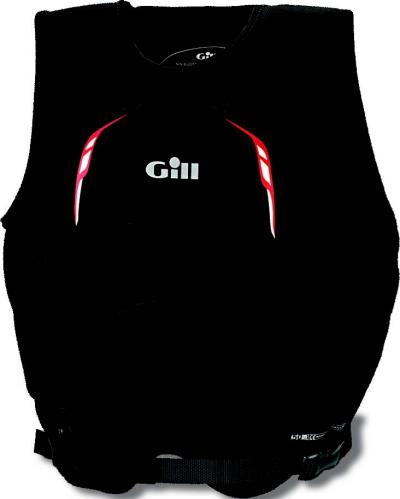
Gill Pro Racer and Compressor vest
Gill is the only vest manufacturer we looked at that offered two very different designs. Their pull-on Pro-Racer buoyancy vest, which is similar in design to common PFDs, is comparable to the Rooster and Zhik designs, except that it has a side zipper for ease of entrance and exit. The jacket also has a large, front storage pocket, adjustable shoulder straps, and a webbing strap around the bottom of the vest. However, it is Gill’s Compressor vest (at left) that represents a significant departure from the other products. At first glance, the pullover Compressor might appear somewhat confining, but once on, it seems more like a second skin, moving with you rather than restricting your movements. It’s billed as being “streamlined” and “low bulk,” which means it can easily be thrown under rash guards, drytops, etc., It is also cut high enough in front that it can be worn under a trapeze harness, providing extra padding. Plus, especially aboard high-speed dinghies, where spectacular crashes are the norm, the Compressor provides impact protection. It includes an adjustable, webbed belt. Pro Racer retail: $80. Compressor Retail: $140
Pro Racer Comments
“It was great. I hardly knew I had it on. And just wearing this, instead of wearing no lifejacket at all, meant just a little more weight on the rail.”
Gill Compressor Vest Comments
“I thought I wasn’t going to be comfortable in this because it looks a bit bulky. But once on, I didn’t even notice it was there.”
**

Rooster Black Diamond**
The Rooster Black Diamond buoyancy aid is a no-nonsense, utilitarian vest that, perhaps as a result, came in well below the prices of the other buoyancy aids we looked at. Rooster offers a wide range of sizes and styles. The men’s sizes include adjustable shoulder and side straps and a large, oval-shaped pocket in the chest area. Women’s sizes are similar to the men’s except that they include a two-part front panel design, with top and bottom panels, to better accommodate a woman’s physique. A single junior size is designed with a waist-cinching webbing belt and front vertical zipper for easy entry and access. Retail: $63.86 and $47.95 (Junior).
Rooster Black Diamond Comments
Men’s model: “It was a good size, well made, and the pocket in front was big enough that I could easily carry the VHF radio there.”
Women’s model: “I like the neoprene they put over the buckles so they don’t catch on things at the shoulder and waist. I do the bow, and I actually felt comfortable having it on when I was up there. Very comfortable, not hot, and it didn’t restrict my motion. I felt it actually made me sit up a little straighter. In the past, the jackets I used caught on the boom and other things. With this one, nothing.”
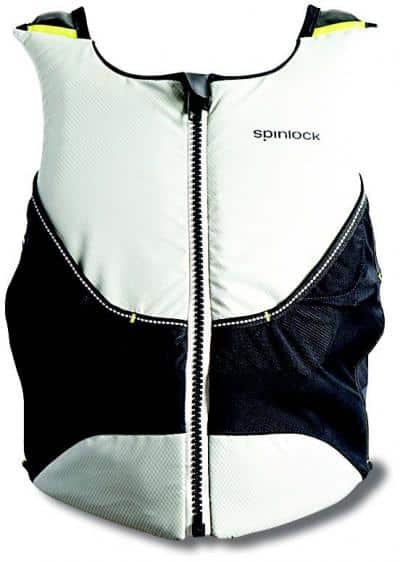
Spinlock Zero
The Spinlock Zero flotation aid is a departure from the more traditional-looking vests in that it was designed for keelboat sailors. That being said, it probably still has a place aboard some dinghies. The Spinlock has a much longer front to provide some padding when hiking out over lifelines. It’s a snug-fitting vest, and you can wear it under a dry top instead of over it. The lower part of the vest is separate from the top, which prevents it from restricting movement as you twist and turn your torso. A unique Velcro system for adjusting the fit at waist level coupled with the front zipper makes this vest easy to get in and out of. It has a ribbed section on the inside of the back to facilitate ventilation, a layer of rubber tape on the bottom inside of the vest to prevent it from riding up, hand-warmer pockets, and small stash pockets above those. Retail: $125.
Spinlock Zero Comments
“Definitely not a dinghy-style lifejacket. It’s long on the bottom of the front and high on the top, so when you crouch way over, such as in a hike, the top part is forced up into your throat area. But it’s very comfortable and compact for keelboat sailing, with lots of great features: pockets, a unique waist adjustment, and lightweight feel. It’s great for hiking on boats with lifelines.”
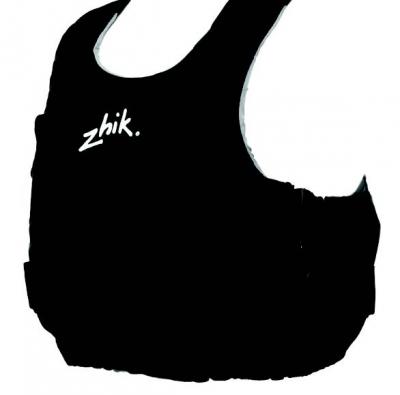
Zhik PFD
Zhik’s pull-on flotation aid is filled with closed-cell foam. A rubber strip on the inside of the lower section prevents the vest from riding up. To avoid catching on the boom when tacking or jibing, especially on dinghies, the top back edge of the vest is tapered. In keeping with the notion that fewer buckles means less to snag, the only buckle on the Zhik is on the side. There is a pocket in front, large enough to carry a small bottle of sunscreen or a multi-purpose tool. The pocket is located high enough that anything you might carry in it will not impede movement. Retail: $119.
Zhik PFD Comments
“Very easy to put on and take off, lightweight, and easy to move around in. It tended to ride up a little bit, so I felt like I had to keep pulling it down. The pocket was too small for a VHF radio, but would be great for a few nutritional bars. Overall, it was really good.”


